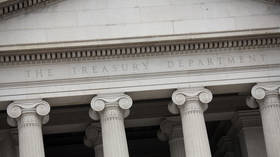Famed investor says young Americans will pay for mounting US debt

US national debt topped $30 trillion for the first time in history last month, spurred on by high borrowing during the Covid-19 pandemic, according to data from the Treasury Department. However, Jim Rogers, legendary investor and co-founder of the Quantum Fund alongside George Soros, says the actual debt amount is likely to be much higher than Washington admits.
“That is just what they admit. It is the on-balance sheet debt, but there’s dozens of trillions more debt off-balance sheet,” Rogers said, in a note to RT. The actual debt volume is difficult to calculate, especially since the start of the Covid-19 pandemic and all the pressures it brought about. Still, the investor “once figured it out as over $200 trillion,” nearly seven times more than the officially recognized sum.
According to Rogers, the US has no chance of climbing out of the current debt hole, and the strategy that’s being implemented is to sit and wait until the younger generation has to deal with the problem.
“The endgame is to keep hoping because they hope it will be someone else’s problem someday. It is not a good time to be a young American,” he stressed.
The US owes a wide variety of creditors, and the debt is roughly divided into public debt and intragovernmental debt. The latter is owed by US Treasury to other federal agencies. The public debt represents funds owed to foreign governments (Japan being the largest holder), US banks and investors, the Federal Reserve, state and local governments, pension funds, insurance companies, and savings bonds. Most economists agree that national debt at a certain level is necessary to push the country’s economic growth. However, if it becomes too large it can result in cuts to government programs, to tax and interest-rate hikes, which in turn would propel prices and trigger an economic crisis.
For more stories on economy & finance visit RT's business section













